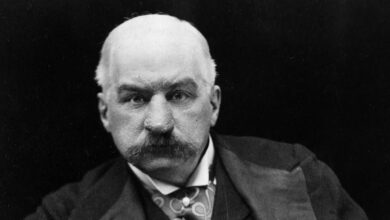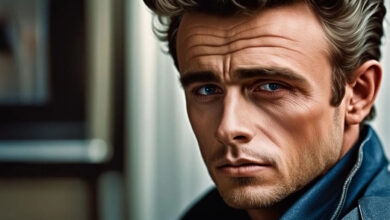Podcast: Play in new window | Download
Subscribe: Spotify | Amazon Music | Youtube Music | RSS
Nikola Tesla was born on 10 July 1856 in the village of Smiljan which is now part of Croatia but was then within the military frontier of the Austrian Empire. His father was an Eastern Orthodox priest and so was his grandfather on his mother’s side.
He was the second youngest of five children, having three sisters, Milka, Angelina and Marica and an older brother called Dane who was tragically killed in an accident whilst riding his horse when Nikola was only five.
He first went to school in Smiljan where he studied German, mathematics, and religion. After completing primary school and middle school, he attended the Higher Real Gymnasium in Karlovac after he moved there in 1870, where the classes were all taught in German as was custom in the region at the time. After completing school in 1873, Nikola returned home to Smiljan but contracted cholera and almost died but recovered enough to run away to the mountains the following year to avoid conscription into the Austro-Hungarian Army. He credited his time in the mountains with making him fitter and stronger and whilst there he made a full recovery.
Nikola Tesla had what is known as an eidetic, or photographic memory and was able to memorise whole books. He credited his mother for giving him the genes that enabled him to do this as well as for his creativity. On top of these abilities, Tesla was also a polyglot, being able to speak eight languages, Serbo-Croatian, Czech, English, French, German, Hungarian, Italian, and Latin.
In 1875, Nikola Tesla enrolled at the Imperial-Royal College in Graz as he had developed a fascination with electrical power following demonstrations that his physics professor had given of this new mysterious phenomenon whilst at school. He studied and worked hard and earned not only top grades but a letter of commendation from the dean of the technical faculty during his first year. However, although he started off well, by his third year, his grades started to fall, and he left Graz in 1878 without a degree.
Tesla moved to Hungary in 1881 to work at the Budapest Telephone Exchange where he was made its chief electrician. He apparently made several improvements to equipment whilst working there but by 1882, he was ready to move on and accepted a position at the Continental Edison Company in Paris where he worked on the city-wide project of installing indoor incandescent lighting. He gained an enormous amount of practical experience whilst working at Edison and was even tasked with making improvements to generating dynamos and motors.
The person overseeing the work in Paris was Charles Batchelor and when he was recalled to the United States in 1884, he took Nikola Tesla with him. Whilst in Paris, Tesla had become a trouble-shooter for the company, travelling to different Edison installations, resolving issues, and improving dynamos and motors, and this is what he ended up doing for the company when he arrived in New York. He worked at Edison in New York for around six months before he decided to quit. It isn’t clear why he left, but the dominating theory is that it was due to unpaid bonuses Tesla believed he had earned.
One of the projects Tesla had been tasked with, and which was allegedly linked to the unpaid bonuses was an arc lighting project, although it was eventually shelved. However, after he left Edison, Nikola decided to pursue the technology and hired a lawyer to help him file the patents. He also found funding from two businessmen who helped him set up the Tesla Electric Light & Manufacturing Company. However, he lost everything, including the patents when his backers pulled out, leaving him penniless and needing to take on whatever work he could find, including at one point earning only $2 per day as a ditch digger.
In 1886, Tesla found new backers who were experienced at handling patents and who were interested in his ideas and the Tesla Electric Company was founded the following year with a laboratory located at 89 Liberty Street in Manhattan.
The laboratory helped him to develop a range of mechanical and electrical devices, and in 1888 a lucrative deal was struck after a primary competitor of Edison’s, Westinghouse Electric, licensed Tesla’s patents for the AC induction motor. Westinghouse bought the patent outright for $216,000 in 1890, making Tesla an independently wealthy man, but more importantly, the money enabled him to not only setup better laboratories, in and around Manhattan, but also to continue working on new ideas and at various times he worked on mechanical oscillators and generators, electrical discharge tubes and early versions of X-ray imaging equipment. He even invented a wirelessly controlled boat.
In 1889, Tesla had travelled to Paris and watched with immense interest the demonstrations being given by Heinrich Hertz that proved the existence of electromagnetic radiation and radio waves. He immediately set about recreating and improving on Hertz’s experiments, eventually coming up with what would become named, the Tesla coil, a device which was able to produce high-voltage, low-current, high-frequency, alternating current electricity. The Tesla Coil was patented in 1891 and on 30 July the same year, at the age of 31, Tesla became a U.S. citizen.
Wireless technology was a tremendously exciting area for him, and he spent a lot of time working on wireless lighting and even the idea of worldwide wireless power distribution and experimented with this using high-power and high frequency electricity in New York and Colorado Springs.
His work led to him also announcing ideas for wireless communication and he began an experiment in the 1890s by building an intercontinental wireless communication and power transmitter known as the Wardenclyffe Tower, but the experiment was never completed after he ran out of money and was abandoned in 1905.
Tesla continued to experiment with new ideas into the 1910s and the 1920s. Some of his experiments were successful, but some were less so. He struggled to keep himself afloat financially and spent most of his life moving from hotel to hotel, often leaving behind unpaid bills. He never took a wife, once saying that he believed himself to be not good enough for any woman, as women were superior to men in every way.
On 7 January 1943, Nikola Tesla died in Room 3327 of the Hotel New Yorker, where his body was found by a maid. During his lifetime, Tesla successfully obtained approximately 300 patents in no less than 26 countries and his name lives on in books, movies, music, television, and of course in the technology, that today, many of us take for granted.
Podcast: Play in new window | Download
Subscribe: Spotify | Amazon Music | Youtube Music | RSS




